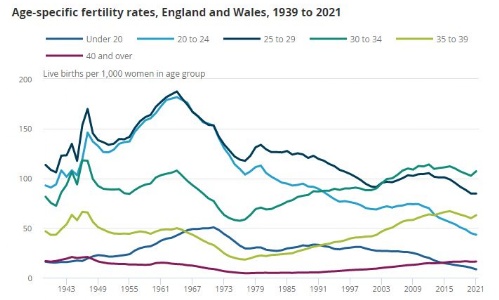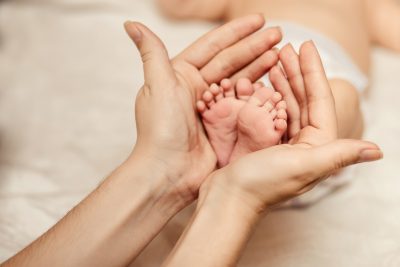We looked at the topic of declining birth rates back in August. Now it seems that the direction of birth rates in England and Wales has changed for the first time in years. This is according to new data published by the Office for National Statistics.
ONS reports that 2021 saw year-on-year increases, both in terms of births and the total fertility rate (TFR). This is a more accurate measure accounting for the size and age of the female population, which rose by 1.9%. The TFR has been below replacement level since 1973. Further, it has decreased every year since 2012 – until last year, that is.
Birth rates are increasing amongst older women
Interestingly, this isn’t a simple reversal of the general downward trend.
Who is having more children also provides some intriguing insights.
Amongst younger women (under 25s), fertility rates actually continued to decline in 2021. Whereas, the 25-29 year-old age group maintained the same rate as the previous year.
Meanwhile, increasing fertility rates were seen in women in all age categories over 30, with fertility rates for women aged 35 to 39 increasing the most (5%).

Why are women having children later?
Factors contributing to this shift are likely to be many and varied, but we could see this development as an extension of the issues causing the general downward trend in birth rates over recent years.
Economic factors
It has become widely accepted that increasing financial pressures on younger people are pushing milestones such as moving into their own homes and starting families later.
Career first?
Some women are choosing to focus on developing their careers before starting a family. The overall increase in birth rates in 2021 was driven by women at older ages, who are likely to have better-established careers.
Extending education
Changes to the school leaving age over the last decade mean students are now required to continue either in education or training until the age of 18. This extends the period of adolescence and postpones entry into full-time and full-paid work, contributing to the delay in the age at which people choose to, or feel able to have children. This is evidenced by the statistic that women under 20 saw the greatest decrease in age-specific fertility rates (16%).
Changing attitudes
And, of course, societal changes including more liberal attitudes, the decreasing prominence of gender roles, and ecological concerns, are continuing to make it more acceptable for women to either delay starting a family, or to stay child free.
What does this mean for schools?
It is fair to say, the ‘stay at home’ Mum is increasingly rare. The majority of families must juggle work and childcare. Schools offering wraparound care can be a very attractive benefit for parents. So too for the school, with the additional income generated from the provision of breakfast and after school clubs.


